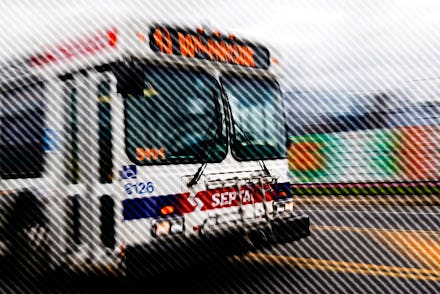Biden just signed the $1.2 trillion infrastructure bill. Here’s what that means for you.
You get a bridge! And you get a bridge!

Federal politics in the United States is a lot like watching a bad television drama unfold. With tons of squabbling between parties, I can’t blame anybody for losing track of what’s going on. But this week is worth paying attention to. On Monday, Biden signed a $1 trillion bipartisan infrastructure bill that includes ambitious plans for fixing the nation’s roads, internet access, and more.
Throughout the past few years, we’ve been bombarded by plenty of news showcasing America’s failing infrastructure. Who can forget all of the tweets about New York City’s subways flooding? Or Texas’s power grid collapsing amid a historic cold snap? Earlier this year, the U.S. even received a C- score from the American Society of Civil Engineers, who predicted it would cost nearly $2.6 trillion over 10 years to fix the nation’s infrastructure.
The new plan will roll out its funding over the next five years. It’s widely regarded as historic because it’s the largest federal investment in infrastructure in over a decade. All of that sounds great, sure. But what does this plan really mean for you? Let’s unpack some of the details.
Everybody gets a bridge
In its 2021 report, the ASCE mentioned that the U.S.’s bridges need a lot of work. Of the 617,000 bridges in the country, 7.5% are considered structurally deficient. That may not seem like a huge percentage, but it’s over 46,000 bridges. And as somebody who watched Minneapolis’s I-35W bridge collapse in 2007, I don’t really want to revisit that with another bridge in the future.
Biden’s plan is devoting $110 billion to investing in roads, bridges, and other major infrastructure projects. That specifically includes $40 billion for bridge repair. According to CNN, the White House says that this is the biggest dedicated bridge investment since construction of the interstate highway system began in the 1950s.
So in the spirit of Oprah: You get a bridge and you get a bridge! Everybody gets a bridge.
Better public transportation
Public transportation in the U.S. is notoriously shit. You could devote entire books to unpacking why, but in short, public transportation has historically been underfunded. All of that got worse during the pandemic, too, as major cities like New York and D.C. responded to shrinking budgets by reducing service, cutting routes, and laying people off.
The infrastructure plan will direct $39 billion into public transit systems. According to the Pew Research Center, the U.S. Department of Transportation estimates a repair backlog of over $105 billion. So, this money isn’t going to be enough to fix every single problem, but it’s at least a start.
More electric vehicles on the road (hopefully)
With climate change worsening, there’s been a huge push to ditch fossil fuels. And a huge source of emissions is cars. Right now, though, electric cars only make up about 3% of all vehicles worldwide. Even though they’re becoming increasingly popular, countries need to invest in these energy alternatives rather than relying on individual people to make the switch over on their own.
The infrastructure bill includes $5 billion to provide zero and low emission buses to public transportation agencies. The White House says it will also have thousands of electric school buses delivered across the country, including in rural communities. In addition, the plan devotes another $7.5 billion to building a network of chargers for consumer electric vehicles.
Better broadband
Perhaps one of the most celebrated wins is the plan to invest $65 billion in improving broadband. Yes, this number is a lot lower than the $100 billion that Biden first proposed in March. But according to the Associated Press, the plan specifically seeks to improve internet services for rural areas, low-income families, and tribal communities. Most of the money will be used to provide grants to individual states.
This is huge, because internet service is no longer a luxury. If anything, the pandemic has proved that. In September, the Pew Research Center reported that 60% of low-income broadband users said they often or sometimes have problems with the speed, quality, or reliability of their internet. When you’re relying on digital school for your kids or using online applications to access government services (because honestly, getting people on the phone is nearly impossible), that’s detrimental to your life.
An overdue deep cleaning
Lastly, Biden’s infrastructure plan will invest $21 billion to clean up Superfund and brownfield sites. If you’re not familiar with the term, a Superfund site is a location designed by the U.S. Environmental Protection Agency that’s been contaminated by hazardous waste.
Along with that, funding will goes toward reclaiming abandoned mines and capping orphaned oil and gas wells. While the infrastructure plan overall contains a lot of points that will ultimately address climate change (like investing in electric vehicles), according to the White House, this portion of the infrastructure plan is the biggest investment in addressing pollution in history.
Because this is a five-year plan, we can’t expect these changes to pop up overnight or even within the next year. Regardless, though, if executed as promised, the infrastructure plan will do a lot to improve people’s lives — not only day-to-day, but hopefully long-term too.